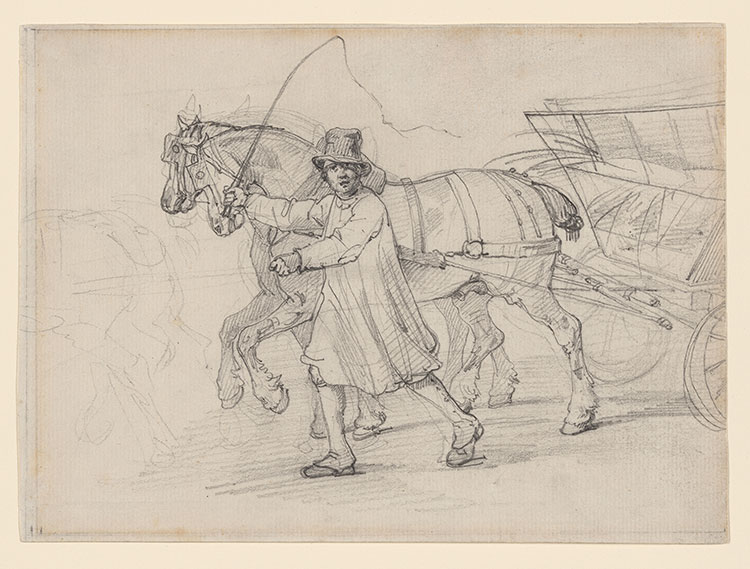
In April 1820, Géricault traveled to London to exhibit his dramatic masterpiece "Raft of the Medusa." He would remain in London for twenty months, returning to Paris in December 1821. He traveled there with his friend, the artist Nicolas-Toussaint Charlet, who is credited with opening Géricault's eyes to the plight of the London poor. While in London, Géricault was part of the social circle of the horse dealer Adam Elmore (1784-1849) and his French wife Zoé. In his works from this period, Géricault embraced a more naturalistic approach as he depicted the cityʼs urban laborers and the centrality of horses to London's economic life.
One subject frequently recorded in the artist's London drawings is horse-driven carts associated with various trades. Here, a youthful cart driver, whip in hand, looks out to the viewer as he leads a pair of horses, wearing blinders, pulling a straw-laden cart. A light trace of the hindquarters of another horse appears at left. The man wears a typical English-style tall hat and a type of long shirt common to laborers. Bazin suggests this sheet may have come from the same carnet in which Géricault compiled his observations of the London streets, noting that it was likely sold in 1846 with a batch of English sketches.
Cohen, Karen B., former owner.
Bazin, Germain., and Géricault, Théodore. "Théodore Géricault, Étude Critique, Documents Et Catalogue Raisonné / Germain Bazin." Paris: Bibliothèque Des Arts, 1987, vol. 7, 2153.
